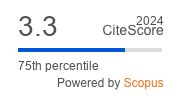Article | Open Access
Historical Perspectives on Foster Care Payments: Changing Practices During the 20th Century
| Views: | 1180 | | | Downloads: | 573 |
Abstract: Payment of foster carers has long been a controversial issue, reflecting the question of whether fostering is a voluntary or professional activity. This article explores explanations for the change that took place during the twentieth century concerning economic compensation to foster parents for caring for other people’s children in their homes. The study is based on document analysis of the child welfare discourse and practice in Sweden. The data consists of documents selected from a municipal child welfare board, documents from the child welfare agent and child welfare assistant at the county level, and documents from national‐level sources, such as legislation and leading social work journals. Foster parents who took care of other people’s children in their homes often received some economic compensation for the care from the municipal child welfare board. In the early twentieth century, this compensation was usually greatest when caring for younger children and lower for older children. Radical changes took place during the century, however, that affected the payment system. In the 1970s, the boards instead paid the greatest compensation to foster parents who took care of teenagers. Starting in 1974, the boards also began paying a subsidy to foster parents. The article analyses explanations for these changes. In summary, the following explanatory factors are discussed: changing perceptions of childhood, changes in circumstances in which children were placed in care, urbanization, and women’s transition to paid employment.
Keywords: foster care; foster children; foster parents; historical perspective; payment; social work; Sweden
Supplementary Files:
Published:
© Ann-Sofie Bergman. This is an open access article distributed under the terms of the Creative Commons Attribution 4.0 license (http://creativecommons.org/licenses/by/4.0), which permits any use, distribution, and reproduction of the work without further permission provided the original author(s) and source are credited.


